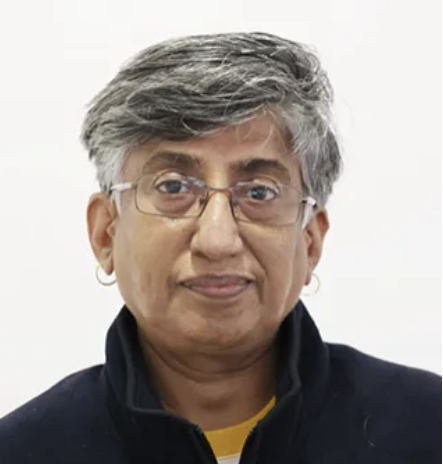OPINION | Radiation and Repression: Uyghurs Bear the Hidden Cost of China’s Nuclear Tests
- Huma Siddiqui

- 5 days ago
- 4 min read
by Huma Siddiqui

Between 1964 and 1996, the People's Republic of China exploded 45 nuclear weapons at Lop Nur in Xinjiang, turning an expansive desert wasteland into one of the most polluted nuclear testing sites in history. But decades later, the full scope of human suffering is still shrouded in official secrecy. Evidence suggests displaced people, polluted environments, and extreme health risks, which Beijing denies, a calculated refusal that has resulted in generations of Uyghur populations suffering the impact.
Forced Displacement from Restricted Zones
Chinese officials insist that Lop Nur was chosen due to the fact that it was "barren and isolated, without permanent residents". This account deliberately disregards fact. Uyghur pastoralists and Kazakh people had inhabited Xinjiang for centuries. Eyewitness testimony confirms systematic displacement with little compensation, ancestral lands grabbed under national security excuses.
They were moved to places within radiation areas with no news of risks. Families drank water unknowingly that had been poisoned, ate radioactive plants, and inhaled plutonium-239-filled air.
NGO Reports on Increased Health Risks
Global campaigning organizations have recorded disturbing health trends. World Uyghur Congress and Unrepresented Nations and Peoples Organization presented testimony to the United Nations Human Rights Council, noting that Lop Nur expelled around six million times as much radioactive material as Chernobyl. Around 1.48 million individuals were exposed to fallout, with the Chinese Communist Party being cited as having scheduled detonations in periods of westward winds, on purpose, maximizing exposure to Uyghur populations.
Japanese physicist Jun Takada gives a conservative estimate of 194,000 people killed by acute radiation exposure. Cancer rates in Xinjiang are between 30 and 35 per cent above China's overall average. Dr Enver Tohti, an Uyghur surgeon, reported lymphomas, leukemia, and congenital malformations at rates many times above national standards. In villages around test sites, some eight out of ten children are born with cleft palates.
Jiuquan region soil samples produced plutonium inventories of 13 to 546 Bq/m², with over 40 per cent of the contamination contributed by Chinese nuclear tests. Radioactive isotopes polluted Xinjiang and adjacent Kazakhstan, where research shows excess doses of radiation between 50 and 60 mGy among border communities.
Lack of Epidemiological Access
China has repeatedly refused independent researchers access to conduct epidemiological research in Xinjiang. No open inquiry into radiation sickness has been allowed, and hospital records are classified. Chinese medical journals printed articles in the 1990s, absolutely ruling out adverse health effects, but other Chinese studies refute these assertions. A 1979 article reported sudden spikes in cases of cancer, weakness, hair loss, and birth defects, findings promptly stifled.
The global scientific community has been systematically excluded from gaining access to data. China's denial of independent verification keeps affected groups from getting medical attention or compensation.
Demands for Investigation by Advocacy Groups
Civil society groups have demanded accountability for decades. The International Physicians for the Prevention of Nuclear War has demanded extensive health evaluations and environmental cleanup. The Unrepresented Nations and Peoples Organization has appealed to international agencies to push Beijing into releasing medical records.
The Lop Nur tests are the world's most extensive set of nuclear tests in an inhabited region. The silence contrasts starkly with compensation schemes set up by other nuclear nations. The United States, the United Kingdom, France, Canada, and Russia have recognized health effects, setting up compensation programs. China is an exception.
PRC's Silence on Compensation
In 2008, Beijing confirmed that it had started issuing payments to troops exposed to radiation. But significantly, civilian victims and indigenous peoples who suffered from fallout were not mentioned, nor was there compensation. Members of the Nuclear 8023 unit, Han Chinese troops sent minutes after explosions, veterans have held protests calling for acknowledgment. Some were given small sums.
Native Xinjiang residents have been given nothing. No restitution, no medical care, no recognition. While Han Chinese veterans sometimes get nominal payments, Uyghur families keep burying children born with gross deformities and nursing relatives dying of radiation cancers.
Denying Justice
The legacy of Lop Nur is systemic injustice. The People's Republic made nuclear weapons a priority at the cost of the vulnerable, displacing people, subjecting them to fatal radiation, and obscuring their suffering. The unwillingness to carry out open studies, refusal to pay compensation, and silencing of evidence indicate state-sanctioned erasure.
Beijing commemorates Lop Nur as a national achievement. Descendants, however, grapple with intergenerational health effects.
Proof of forced evictions, health crises documented by NGOs, denied epidemiological access, advocacy calls, and Beijing's silence unveil a disturbing reality: the PRC deprived its own citizens of justice. The invisible victims remain invisible by intent, a tribute to a nuclear program based on systematic ethnic minority sacrifice. Until China opens its archives, allows independent investigations, and admits the human toll, Xinjiang's fallout will be quantified in generations deprived of their basic right to truth, health, and dignity.
About Author

Huma Siddiqui is a senior journalist with more than three decades covering Defense, Space, and the Ministry of External Affairs. She began her career with The Financial Express in 1993 and moved to FinancialExpress.com in 2018. Her reporting often integrates defence and foreign policy with economic diplomacy, with a particular focus on Afro-Asia and Latin America.




Comments